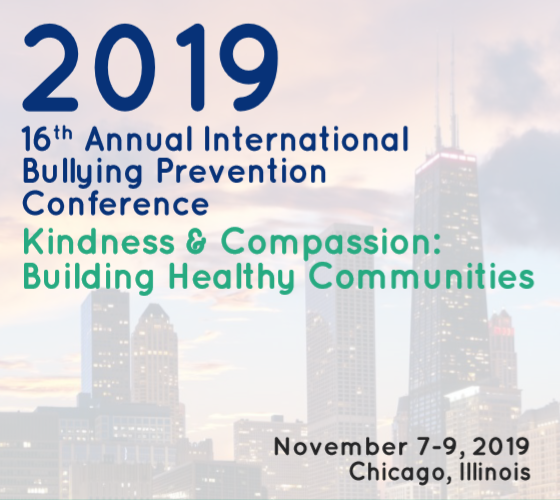Bullying Questions and Answers
What if my best friend’s child is bullying my child? How should I handle it with the parent, school, and my child?
I suggest you talk with the appropriate school personnel.
My child is different from other children due to [learning problems/ a chronic health condition/ physical or mental health problems/ adoption/ other?]/ How might I work with school personnel [staff?] to ensure that her or his special needs are met and to discuss my concerns that my child is vulnerable to being bullied?
Many school personnel are potential resources for you. In addition to the classroom teacher, consider school guidance counselors, psychologists, and the school nurse. If you can’t get to school to meet, then call or email one of them to discuss your concerns.
How do we know that the programs work and why? And, what is the cost-effectiveness of the programs that may appear to work?
Anti-bullying programs should endeavor to do the following:
- The first step is to engage an evaluation researcher in the program planning process.
- Conduct a needs assessment of the prevalence of bullying in your target areas, e.g., schools. The assessment provides the baseline data for measuring bullying trends.
- Among all evaluation approaches, including the Olweus, Social-Emotional Learning (SEL); we recommend the Logic Model as a framework for program planning and evaluation. The model brings theory to practice; it provides empirical data for determining what works, why, and cost-effectiveness.
- Program budget should include cost of program monitoring and evaluation (M&E).
- Use culturally competent/appropriate tools to collect data and data analysis.
- Provide evaluation reports to stakeholders, including funders.
- Disseminate results widely to galvanize support for sustainability.
How do you sustain bullying prevention efforts over time?
First, there needs to be a bullying prevention “champion” in your school/district. This person needs to be passionate about creating a safe environment for children—and provided with professional development in order to stay current on the research into best practices and learning form practitioners in other schools. IBPA’s regional and international conferences are a great place for this professional development. Some states also have networks that meet regularly. Commitment to reading blogs and research from the professionals in the field helps as well.
Second, the message needs to be clear, consistent, and repeated often—“we are doing bullying prevention because it is important to keep our students safe in order for them to be able to learn to the best of their ability.” It is extremely important that all staff be given an annual “booster” to remind them of the difference between bullying and conflict, and equally important, what to do when they see it, suspect it, or it is reported to them. In addition, a monthly newsletter with highlights from research, news from the classroom (staff ARE interested in what others are doing in their district), and available resources (books, speakers, conferences, etc) helps to keep the message front and center on a regular basis. Providing practical ideas of what to do in their classrooms to create a safe environment are appreciated and welcomed. Having regular time during staff meetings or team collaboration to talk about bullying prevention and related topics is also essential. All of these efforts are important because when we stop talking about it, we stop thinking about it, we stop doing it.
Third, be aware that training is never complete. There are always new personnel that need to be trained in bullying prevention and intervention. Teachers, teacher aides, lunch and playground supervisors, custodial staff, bus drivers, nurses, office staff, administrators—all are critical people who need to know, not only how to prevent bullying and promote civility, but also what to do when they see it, suspect it, or it is reported to them.
Fourth, gather a group of teachers from across the grade levels to prepare an annual K-12 class meeting plan. When teachers are involved in the creation of this plan, it is much more creative, teacher friendly, and more likely to be used. This is an excellent way to incorporate district-wide initiatives as well. Perhaps there is going to be a guest author visiting the district during the school year. The annual class meeting plan can take that into consideration and have meetings based on the author’s books or themes in the author’s books. If the district has an emphasis on learning about the Universal Declaration of Human Rights, the human rights articles can be incorporated into the annual plan. The more teacher-friendly this annual plan is, the more likely it will be implemented in the classroom. Having teachers involved in preparing it, assures that it is more likely to be taken seriously by administrators and teachers.
Fifth, have a clear investigation protocol for when a bullying incident is reported. Train individuals in every building in the district on how to do a proper investigation and follow-up accordingly. This, of course, needs to be done in conjunction with the state law and district policy. Having a clear investigation protocol eliminates the “but nobody ever does anything about it” message that can kill any program. Hang in there. Keep going. It is good for our children for you to do so.
Do Social Networking sites do anything about cyberbullying?
The majority of social networking sites consider cyberbullying a violation of the terms of use of their sites and they rely on users to report violators. They can remove content and close accounts. They also work with law enforcement and helplines. You can find quick links to report abuse on various social networking sites here: https://cyberbullying.org/report
Is cyberbullying an epidemic now that kids are on social media all of the time?
While cyberbullying is a concern, it still happens with much less frequency than in person bullying. However studies show that the majority of youth who experience cyberbullying also experience in person bullying. Being exposed to both forms of bullying can be especially challenging since youth may have a difficult time finding a place where they feel secure. Make sure kids know how to get help for bullying whether it occurs online or offline.
Should I tell my child to fight back if he or she is bullied?
Adults often tell stories of how they were able to stop someone from bullying when they were children by fighting back. These stories often confuse conflicts with true bullying. The reality is that trying to fight someone who is bullying can make things worse and also put your child (or the other child) at risk for serious injury and other complications. Whenever possible parents should encourage their child and also work on a safety plan with the school or community organization that includes extra supervision and support from trusted adults and peers.
A Shift in Focus: From Adverse Childhood Experiences (ACEs) to Positive Childhood Experiences (PCEs)
Adverse Childhood Experiences Bullying was added as an Adverse Childhood Experience (ACE) by the Center for Disease Control in 2017, placing the impact of bullying behavior on par with all other ACEs. In short, these experiences have been shown to disrupt neurological development, leading to cognitive, social, and emotional impairment. This impairment may lead to […]


